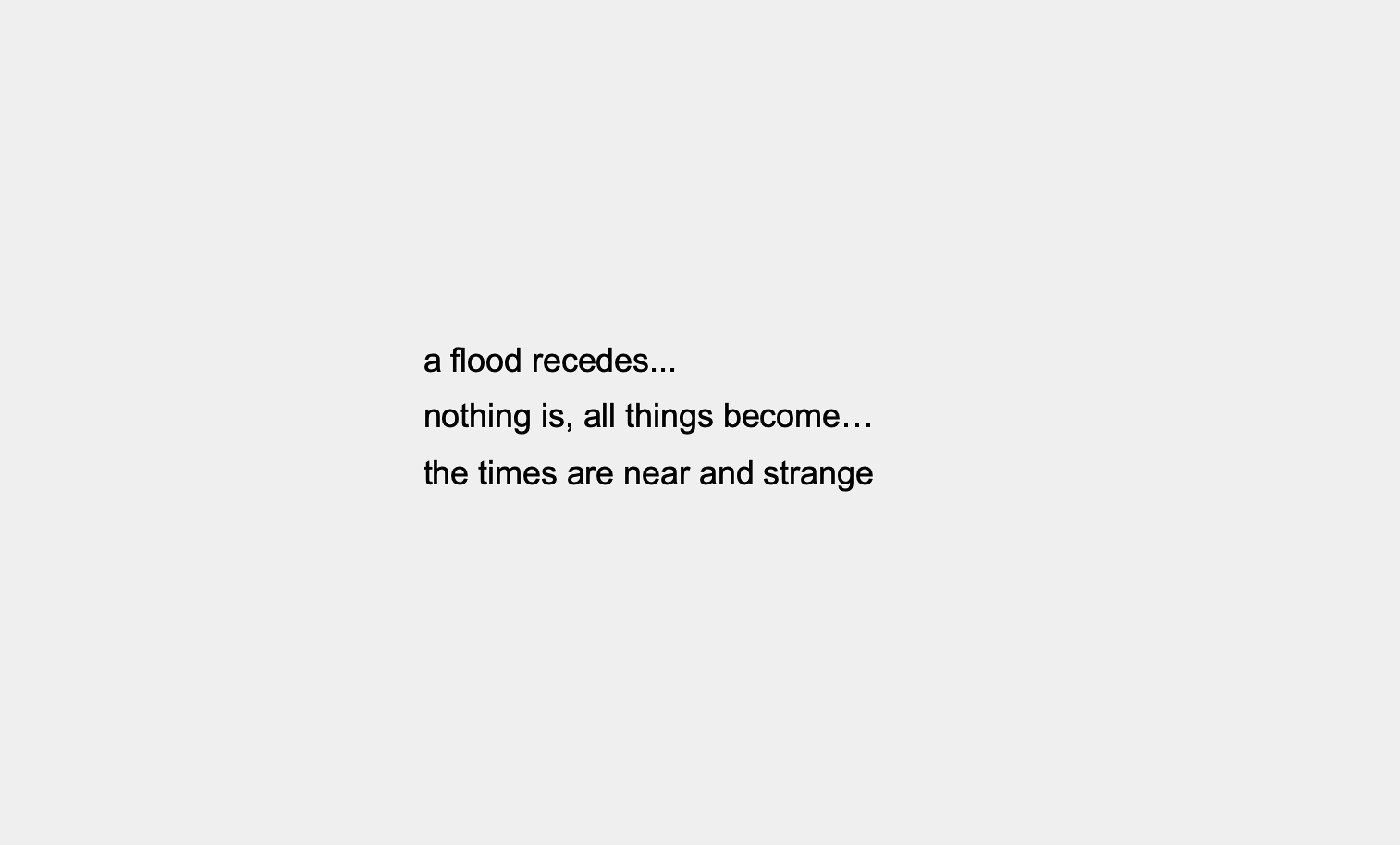This is the season in which editors round up the year’s highlights, string them together, and tell you what they mean. The last of the institutional shows have opened, Miami Beach marks the final stop on the art fair caravan, and so the time arrives to make sense of what happened.
It’s difficult, right now, to find the necessary critical distance. Not only are we right in the middle of crises including (but hardly limited to) a global pandemic, but the rhythms which normally conclude in December’s period of rest have collapsed. Much of what was planned has been suspended or deferred. Days dragged on as weeks flew by. Nothing happened while a great deal happened. The breakdown occasioned by the pandemic did not manifest as spectacle—there was no explosion, there was no running—but as a disorienting shift in the ground underfoot. Which is to say that 2020’s many upheavals also registered as aesthetic crises, with implications for how we conceive the world.
This is also to say that we’re not now going to give you our ten best exhibitions of the year. Instead we might point out how some of our recent coverage has unsettled those kind of categories. Take Jareh Das’s recent description of how the movement for Black lives has been adapted by artists in Lagos. Or the way in which Russian collective Chto Delat took cues from the historical avant-garde when working towards a performance in Athens with victims of more recent traumas. Or how Umashankar Manthravadi’s sonic experiments in the reconstruction of histories effaced by colonial violence translate into a book, exhibition, and talks program. These projects evince different relationships to time than that which underlies the end-of-year roundup or, for that matter, divides history into discrete periods or brackets identities into distinct classifications. We’re not so interested in enforcing those boundaries as in observing the effects of their transgression.
And so we’d invite you to go back into our—free!—online archive in order to read these and other features against forthcoming reports from New York, Istanbul, São Paolo, London, and Hong Kong. We hope that in doing so you might draw links that are unexpected even to us, and in the meantime we’ll continue to publish writing that considers how boundaries shift. This week, Murtaza Vali on how Salman Toor’s work shows how queer Asian experience in the United States was transformed by 9/11 long before it was interrupted by the pandemic; early next, a conversation between Pablo José Ramirez and Brook Andrew offers a reminder that dislocations of time and space (“tremors,” as the Biennale of Sydney’s artistic director calls them) are less unprecedented for the victims of European colonialism than its agents. In a gesture to the prevailing sense of bewilderment, we’ll end the year by reflecting on the art we most regret not having been able to see.
At risk of contradicting our pledge not to reduce the year to a simple message, it seems reasonable to state that it has changed the way many people think and see. It is hard to reconcile the idea of time as a forward march with the experience of recent months; who can believe in the absolute freedom of the individual when forced to acknowledge how intimately our bodies are connected? Recuperation, conservation, and interdependence are not only art world buzzwords but inform the much wider discourse around how societies might recover. The hope is that we will not fall back on a discredited order but find new ways of organizing time, being together, and moving ideas around.
